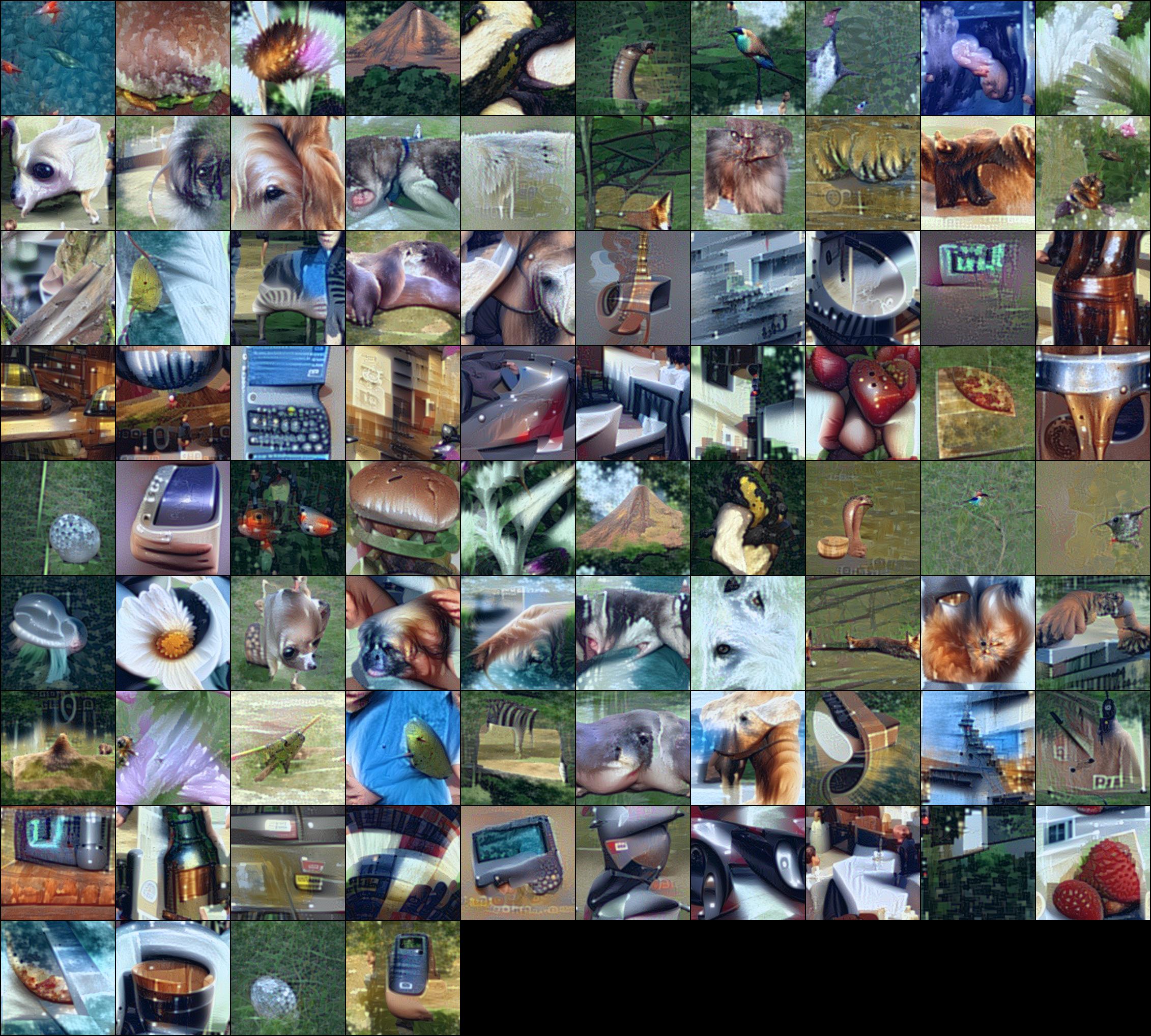This repository is the official PyTorch implementation of Dreaming to Distill: Data-free Knowledge Transfer via DeepInversion presented at CVPR2020. The code will help to invert models from torchvision (trained on ImageNet) and run them over another model to check generalization. We plan to update repo with CIFAR10 examples and teacher-student training.
Other links:
[Camera ready version]
[ArXiv PDF]
[Inverted images]: from ResNet50v1.5, ~2GB, organized by classes, ~140k images. Were used in Section 4.4 (Data-free Knowledge Transfer), best viewed in gThumb.
Copyright (C) 2020 NVIDIA Corporation. All rights reserved.
This work is made available under the Nvidia Source Code License (1-Way Commercial). To view a copy of this license, visit https://github.com/NVlabs/DeepInversion/blob/master/LICENSE
Code was tested in virtual environment with Python 3.6. Install requirements:
pip install torch==1.4.0
pip install torchvision==0.5.0
pip install numpy
pip install Pillow
Additionally install APEX library for FP16 support (2x less memory and 2x faster): Installing NVIDIA APEX
Provided code was originally designed to invert ResNet50v1.5 model trained for 90 epochs that achieves 77.26% top-1 on ImageNet. We are not able to share the model, but anyone can train it given the public code: ResNet50v1.5. Code works well for the default ResNet50 from torchvision package.
Code was tested on NVIDIA V100 GPU and Titan X Pascal.
This snippet will generate 84 images by inverting resnet50 model from torchvision package.
python imagenet_inversion.py --bs=84 --do_flip --exp_name="rn50_inversion" --r_feature=0.01 --arch_name="resnet50" --fp16 --verifier --adi_scale=0.0 --setting_id=0
Arguments:
bs- batch size, should be close to original batch size during training, but not necessary.do_flip- will do random flipping between iterationsexp_name- name of the experiment, will create folder with this name in./generations/where intermediate generations will be stored after 100 iterationsr_feature- coefficient for feature distribution regularization, might need adjustment for other networksarch_name- name of the network architecture, should be one of pretrained models from torch vision package:resnet50,resnet18,mobilenet_v2etc.fp16- enables FP16 training, will use FP16 training via APEX AMP (O2 level)verifier- enables checking accuracy of generated images with another network (defmobilenet_v2) network after each 100 iterations. Useful to observe generalizability of generated images.setting_id- settings for optimization: 0 - multi resolution scheme, 1 - 2k iterations full resolution, 2 - 20k iterations (the closes to ResNet50 experiments in the paper). Recommended to use setting_id={0, 1}adi_scale- competition coefficient. With positive value will lead to images that are good for the original model, but bad for verifier. Value 0.2 was used in the paper.random_label- randomly select classes for inversion. Without this argument the code will generate hand picked classes.
After 3k iterations (~6 mins on NVIDIA V100) generation is done: Verifier accuracy: 98.80...%.
We generated images by inverting vanilla ResNet50 (not trained for image generation) and classification accuracy by MobileNetv2 is 99%.
A grid of images look like (from /final_images/, reduced quality because of JPEG compression)

Optimization is sensitive to hyper-parameters, try to change l2 regularization, betas of Adam optimizer (beta=0 work well),
1keep look at loss_r_feature as it indicates how close feature statistics are to the training data.
If run out of memory or can't use FP16 optimization then reduce the batch size, in the paper we used batch size of 152.
The code will generate images from 41 hand picked classes, to randomize the target class use argument --random_label.
Examples of running code with different arguments and resulting images can be found at /example_logs/.
Check if you can invert other architectures, or even apply to other applications (keypoints, detection etc.). Method has a room for improvement: a) improving the loss for feature regularization (we have MSE but that is not ideal for distribution matching), b) making it even faster, c) generating images for which multiple models are confident, d) increasing diversity.
Share your most exciting images at Twitter with hashtag #Deepinversion and #DeepInvert.
@inproceedings{yin2020dreaming,
title = {Dreaming to Distill: Data-free Knowledge Transfer via DeepInversion},
author = {Yin, Hongxu and Molchanov, Pavlo and Li, Zhizhong and Alvarez, Jose M and Mallya, Arun and Hoiem, Derek and Jha, Niraj K and Kautz, Jan},
booktitle = {IEEE Conf. on Computer Vision and Pattern Recognition (CVPR)},
month = june,
year = {2020}
}
